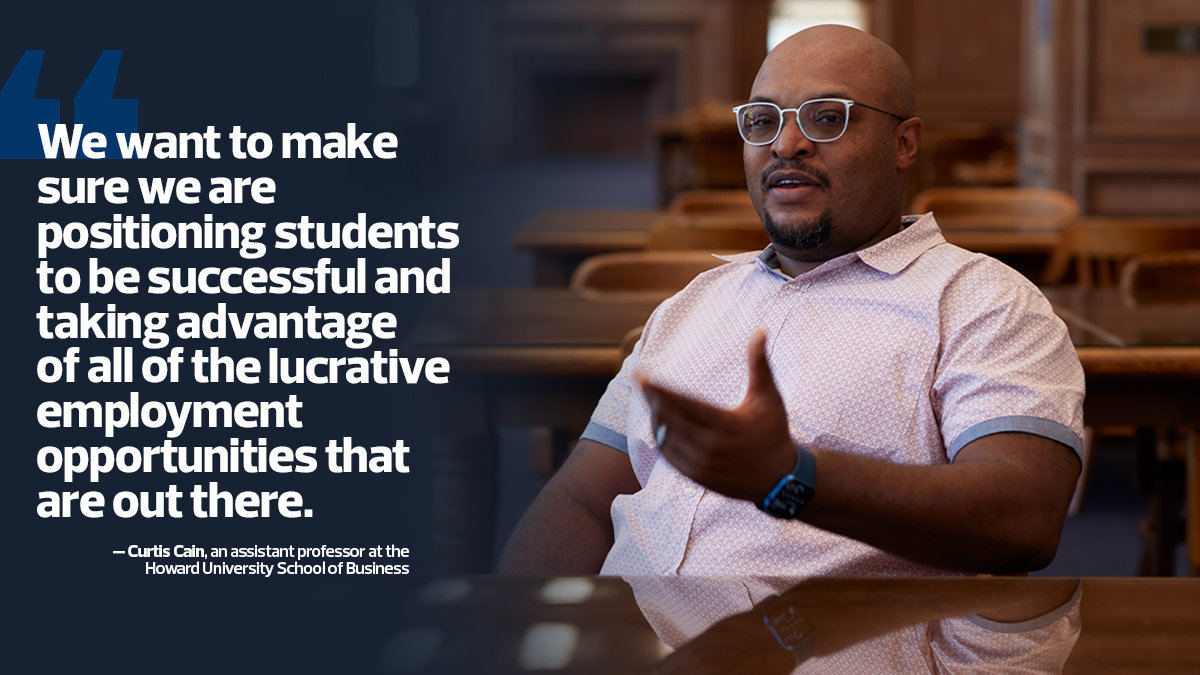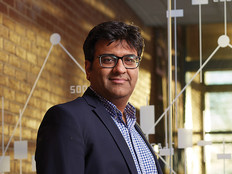Cloud Curriculum Helps Students Build Transferable Skills
Last year, Howard and Amazon Web Services announced a partnership to develop courses and a master’s program around cloud computing. Students will begin classes in the spring of 2023, with an expected initial enrollment of around 30 people. Amazon engineers will serve as co-instructors in some courses, and students will get hands-on experience working with AWS resources.
“These types of programs allow students to build portfolios they can show,” Cain says. “It’s not just hypothetical. It will allow our students to begin as cloud practitioners, and then show that they can be solution architects. Then, they can get into more specialty areas like data analytics, machine learning and database systems.”
DISCOVER: How to use analytics in support of university DEI goals.
Cain points out that there are more than 200 different applications within AWS, and he says that course designers are still deciding which resources to use in their classes. In his own classes, Cain plans to help students build skills around Amazon Redshift (the cloud vendor’s data warehousing and operational database platform); Amazon SageMaker (a machine learning modeling suite); and tools that use artificial intelligence for object detection and identification, such as AWS DeepLens.
“A student who enrolls in the program is looking to get a master’s degree, but AWS also has different levels of certification, and we want to see students taking advantage of those along the way as well,” Cain says. “The cool thing about the cloud is that there are foundational concepts that are similar across vendors. Once you learn one of them, you’re better positioned to transition to another.”

Bellevue College Cloud Program Helps Meet Market Demands
Bellevue College in Washington named its continuing and career education arm the Tombolo Institute, after the word for a sandbar that joins an island to the mainland. The institute aims to similarly serve as a bridge, helping working professionals build their careers. When it comes to the cloud, officials are leaning on an ongoing partnership with Microsoft to help midcareer students grow their skills.
“We get input from the job marketplace — from the students and also from our advisory council made up of employers — and there’s definitely a gap in terms of the talent that employers are looking for and the people that want to get into the field,” says Ray Chew, director of technology at the Tombolo Institute. “There are all of these job openings, but you can’t just take a course and then expect someone to hire you tomorrow, so we’ve helped students to bridge that gap.”
Bellevue College’s partnership with Microsoft gives the school access to the vendor’s content and resources. It also provides training for Bellevue College instructors, ensuring that courses are led by professionals with thorough knowledge about the latest tools and practices in cloud computing. Students in the program pursue Microsoft cloud certifications, making them more competitive job candidates, Chew says.
“Cloud computing touches everything today,” says Chew. “Now all of the application services are pretty much cloud-based. If you want to know the world of IT, you need to know how cloud computing works.”










